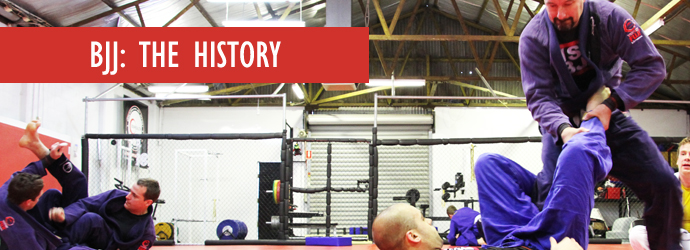On November 12th 1993, Royce Gracie rocked the martial arts world with his winning performance in the first Ultimate Fighting Championship (UFC) where he used BJJ to defeat numerous opponents from a variety of martial arts including competitors that were both stronger and heavier than Royce.
The original UFC was an event with no weight classes, no gloves, very few rules (even hair pulling and groin strikes were allowed) and a range of competitors from all sorts of martial arts backgrounds. The event allowed people from any martial arts system to compete against each other and some contestants even took pride in not being martial artists at all, instead openly admitting to the fact they were pub brawlers. This competition was really the turning point for Brazilian Jiu-Jitsu, it shot the sport into the mainstream and left audiences wanting to know more about the martial art that led the ‘little guy’ to victory.
In spite of the somewhat shocking brutality of such an event, the early UFC’s did serve to open up the world’s eyes to what really does (and doesn’t) work against a resisting opponent and it proved unequivocally that a well-trained Brazilian Jiu-Jitsu practitioner is very well equipped to deal with this type of ‘no-rules’ environment. It also proved that BJJ is one of the most effective martial arts to have ever been created.
The historical origins of BJJ lie in Brazil where a pair of brothers named Carlos and Helio Gracie began adapting Judo and Jiu-Jitsu techniques they had been taught by an expert Japanese martial artist named Mitsuyo Maeda. Carlos and Helio Gracie began to tweak, modify, improve, add and chop away at the material they had been taught whilst testing their developments in no-rules contests of all weights, sizes and backgrounds. Thus Brazilian Jiu-Jitsu was born has come to be known throughout the world as the one of the most effective martial arts the world has ever seen.

